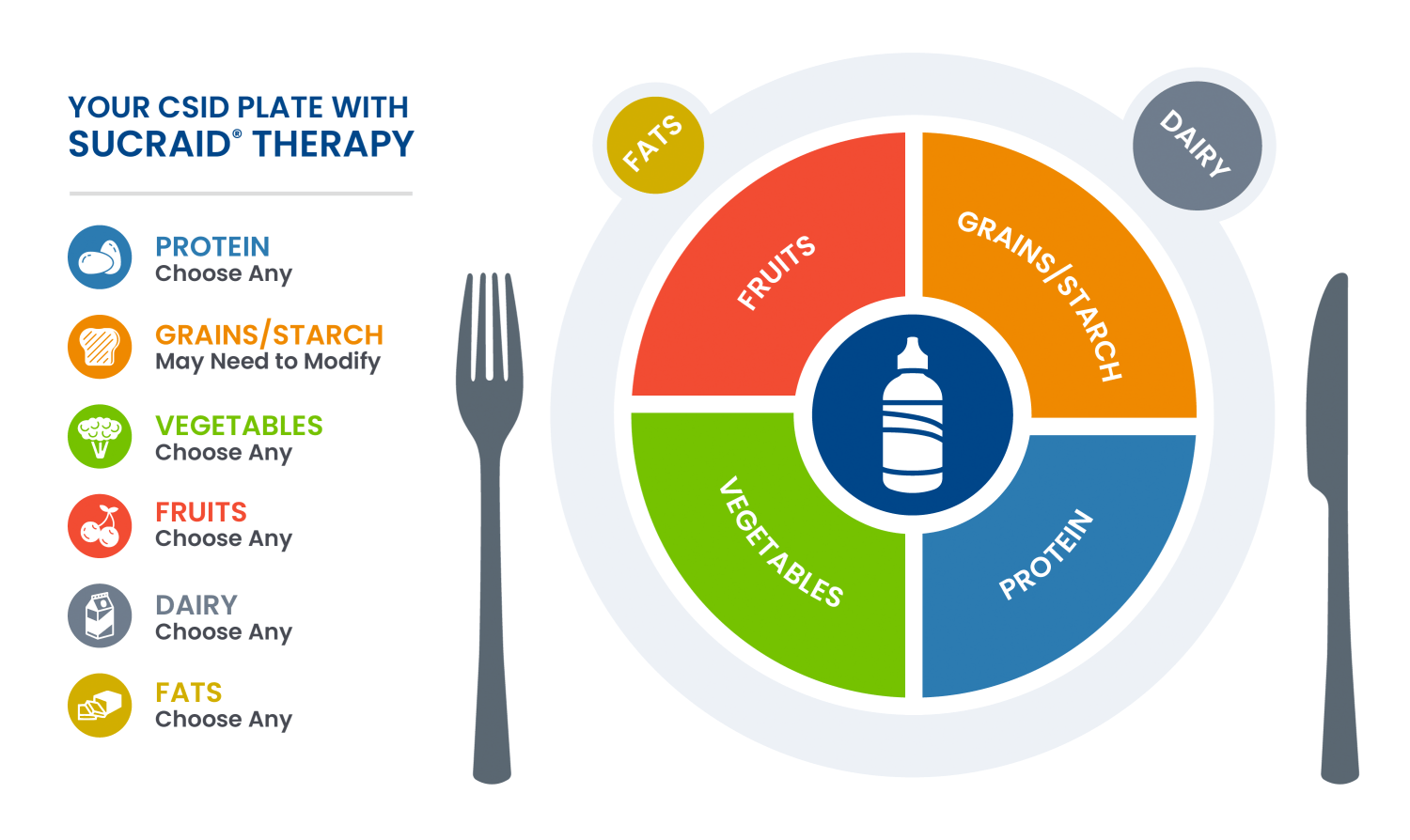Nutritional Support
Diet and Nutrition Resources
In addition to enzyme replacement therapy with Sucraid®, some individuals with Congenital Sucrase-Isomaltase Deficiency (CSID) may require dietary changes.
In This Section
Dietary Guides for Patients Treated with Sucraid®
SUCRAID® AND YOUR DIET
Sucraid® and Your Diet
Infant Dietary Guide
Infant Dietary Guide for Individuals Treated with Sucraid®
Child Dietary Guide
Child Dietary Guide for Individuals Treated with Sucraid®
Adult Dietary Guide
Adult Dietary Guide for Individuals Treated with Sucraid®
How to Read a Food Label
How to Read a Food Label
While Taking Sucraid®
Learn how to CHOOSE YOUR FOODS when you have been diagnosed with Congenital Sucrase-Isomaltase Deficiency (CSID) and are starting Sucraid® (sacrosidase) Oral Solution therapy.
With Sucraid® therapy, you can include foods that are higher in sucrose because Sucraid® helps you digest these foods. Because Sucraid® therapy does not break down some sugars that come from the digestion of starch, you may need to restrict or experiment with the amount of starch in your diet to prevent any lingering gastrointestinal (GI) symptoms. But, in the end, the goal with Sucraid® therapy is to eat as near normal and as healthy a diet as possible without the return of GI symptoms.
For a healthy diet, you can use “Choose My Plate” (see https://www.choosemyplate.gov/) to help plan your meals. Many of you with CSID who are on Sucraid® therapy can choose freely from all food groups, but some may need to be cautious about foods that are high in starch.

It is helpful to keep a journal and write down what you are eating and whether you experience any GI symptoms. Those of you who continue to have lingering GI symptoms while taking Sucraid® may need to look back through your journal and see if starch may be triggering your GI symptoms.
If you have been on Sucraid® for several weeks and continue to have some lingering GI symptoms, you should talk to your doctor about whether you may need to adjust your starch intake.* Your doctor may advise the following:
- Start by limiting starchy foods to one small serving per meal (3 times a day)
- At first, you may want to limit your starchy food choices to:
- ½ cup white potato
- ½ cup white rice
- 1 slice sourdough bread
- Depending on how well you tolerate these starchy foods, you may be able to increase or decrease the amounts until you find your tolerance level (the amount you can eat without having GI symptoms)
- Your doctor may suggest you try other new foods that are high in starch, like:
- ½ cup sweet potatoes
- 1 slice whole grain bread
- ½ cup quinoa
- ½ cup beans, peas, or corn
- The final group of starchy foods you may decide to try includes processed foods and baked goods or any other starchy foods that you enjoy.† For example, you might try:
- ½ cup breakfast cereal
- small muffin
- 3 cups popcorn
- small piece of cake with icing
- granola bar
- small bag of chips
*You should discuss dietary changes with your physician or a registered dietitian prior to making any changes to your diet.
†Be cautious when adding processed foods and baked goods and read food labels carefully, since many hidden ingredients could trigger GI symptoms.




